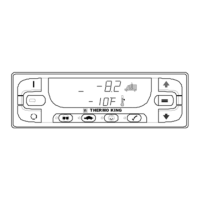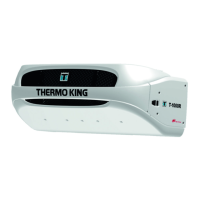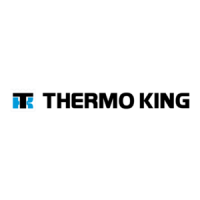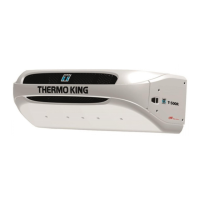53
CARE AND MAINTENANCE
CARE AND MAINTENANCE
PRE-TRIP INSPECTION
Pre-trip inspections are essential to minimize
operating problems and breakdowns, and must
be performed before every trip involving
refrigerated cargo.
1. Diesel Fuel
Must guarantee engine operation to the next
check point.
2. Engine Oil
Should be at the FULL mark. Never overfill.
3. Coolant
The indicator should be in the FULL (white)
range. If the coolant level is in the ADD (red)
range, add coolant to the expansion tank.
Coolant should be a 60/40 mixture of ethylene
glycol and water to provide protection to
-34°C.
4. Battery
The terminals must be tight and free of all
corrosion. Electrolyte should be at full mark.
5. Belts
The belts must be in good condition and
adjusted to the proper tension.
6. Electrical
Ensure all electrical connections are securely
fastened. Wires and terminals should be free of
corrosion, cracks or moisture.
7. Structural
Visually inspect the unit for leaks, loose or
broken parts and other damage.
8. Seal
The unit mounting seal should be tightly
compressed and in good condition.
9. Coils
Ensure condenser and evaporator coils are
clean and free of debris.
10. Cargo Box
Inspect the interior and exterior of the truck for
damage. Any damage to the walls or insulation
must be repaired.
11. Defrost Drains
Check the defrost drain hoses and fittings to
ensure they are open.
12. Doors
Ensure doors and weather seals are in good
condition, doors latch securely and weather
seals fit tightly.
13. Remote Evaporators (SPECTRUM)
• Visually inspect Evaporator(s) for damaged,
loose, or broken parts.
• Check also for refrigerant leaks.
Check Defrost initiation and termination
(including defrost timer) by activating/
initiating a manual defrost.
AFTER START INSPECTION
After the unit is running, check the following
items to confirm that the unit is running
properly.
1. Oil Pressure
Check the engine oil pressure indicates OK.
When first starting a cold engine, the oil
pressure may be higher.
2. Pre-cooling
Make sure that the setpoint is at the desired
temperature and allow the unit to run for a
minimum of 30 minutes (longer if possible)
before loading the cargo box.
3. Defrost
When the unit has finished pre-cooling the
cargo box interior, manually initiate a defrost
cycle. This will remove the frost that builds up
while running the unit to pre-cool the truck.
The defrost cycle should end automatically.
Note: The unit will not defrost unless the
evaporator coil temperature is below 6 C.
CAUTION!
Do not remove the expansion tank cap
while the coolant is hot.

